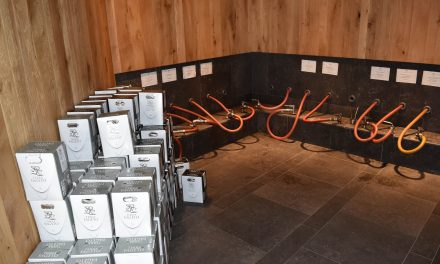It’s harvest time!
Wait a minute….Summer isn’t over yet. How can that be?
Believe it or not, the California wine grape harvest is already nearly over. Thanks to the same weather conditions that have caused our epic drought, now into its fourth year, the growing season has shifted, grapevines experiencing early bud breaks. The season is still the same length, just early to start and end. In Napa they began harvesting Pinot Noir in late July, with Sauvignon Blanc and Cabernet following in August.
The climate has resulted in reduced overall yield for the 2015 vintage, down 12% from prior years. But 2011-13 were record years in tonnage. So we are still in abundance, just closer to average.
Articles reporting the early harvest were full of other interesting statistics.
It may not be news to you but nowadays California makes 90% of the nation’s wine. Considering that there are numerous up and coming regions, from the states of New York to Washington, not to mention areas previously unknown for wine like New Mexico, – let’s now forget Oregon, California’s pinot powerhouse neighbor -, I was surprised by how prevalent California wine still is. It accounts for 3/5ths of the bottles consumed in the U.S.
Now for another statistic I personally find disheartening. California draws 21 million visitors to its various wine regions. You don’t to tell me! I know.
Having visited Napa and Sonoma since 1986 I am well aware of the crowds flocking into the area. On some Sundays Highway 29, the main north-south drag in Napa, or Highway 12 that connects Napa to Sonoma, feel like all twenty one million showed up at once.
That stretch limo you see is in front of the Darioush Winery of Napa. Located in the Silverado trail, it features a replica of the ancient Persian ruins of Persepolis and of course good Cabernet Sauvignon. All of it, the limo, the sightseeing and the wine can be had at hair raising prices.
In the meanwhile us locals seek refuge from the tourist crush farther north, around Healdsburg, where a confluence of three appellations offers numerous varietals in friendly wineries. But this lovely area also being more recognized. Soon we won’t know how to flee the buses, limos and their stylishly drunk out-of-state clientele.
You would think that these hordes are in search of the famed varietals of the area, Cabernet and Chardonnay. Let’s add Pinot Noir too, so in vogue nowadays. Think again.
It turns out that there are 117 varietals grown in the state. I am not the only one tired of the same old. Everyone is looking for new flavors and winemakers are happy to deliver. The so called big five – Cabernet, Chardonnay, Pinot Noir, Merlot and Zinfandel – still dominate the plantings in the state with 615,000 acres devoted them, nearly half the land available. The remainder is available for the fun of discovery.
Winemakers have another motive for diversifying into risky, lesser known varietals. In a crowded field it is becoming increasingly difficult for any given maker to distinguish themselves. Guess how many wineries there are in California nowadays?
If you said 4300 you were close to the correct number.
No wonder I can no longer keep track of labels from areas I think I know such as Carneros or Russian River.
These wineries have sold $24.6 billion worth of product in 2014 and will undoubtedly do better in 2015. Given the crazy price tags of bottles coming out of Napa in particular, but also from other celebrated makers, it feels as though all that twenty four billion is being spent on just three or four bottles.
The prospect of new wineries and styles does keep our wine country fresh year after year.For me this endeavor is matched by another, yet more formidable quest, that of tracking new San Francisco restaurants. It’s another endless task. But don’t order Napa wine in them. It’s the fastest way to go broke.













